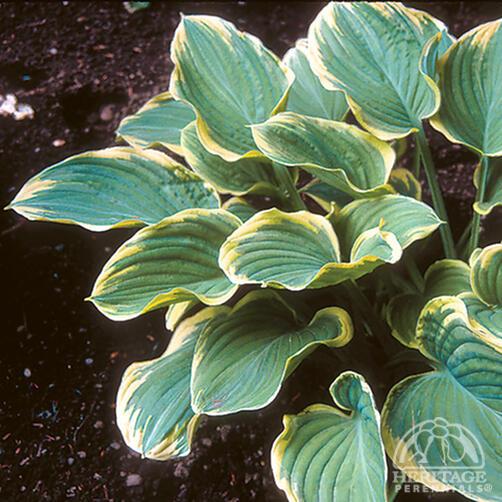Hosta ‘Sagae’
Plant number: 1.278.210Hosta are among the most popular of perennials for shady areas, with hundreds of varieties now readily available. Plants form sturdy mounds of foliage, topped with lily-like blooms. This outstanding selection forms a large, upright specimen with powdery grey-green leaves edged with white to cream streaks. Lavender flowers appear in July. Great in borders, also good for planting in mixed containers or tubs. Hosta go completely dormant in the fall, and the dying foliage can be removed any time before mid spring. Easily divided in either spring or fall, but plants may be left alone for years. Good slug resistance. While deer enjoy eating Hosta, this variety may be slightly less palatable to deer than others. Formerly known as Hosta fluctuans ‘Variegated'. Selected as the 2000 Hosta of the Year by the American Hosta Growers Association. Further details for |
Hosta ‘Sagae’
Plant number: 1.278.210Hosta are among the most popular of perennials for shady areas, with hundreds of varieties now readily available. Plants form sturdy mounds of foliage, topped with lily-like blooms. This outstanding selection forms a large, upright specimen with powdery grey-green leaves edged with white to cream streaks. Lavender flowers appear in July. Great in borders, also good for planting in mixed containers or tubs. Hosta go completely dormant in the fall, and the dying foliage can be removed any time before mid spring. Easily divided in either spring or fall, but plants may be left alone for years. Good slug resistance. While deer enjoy eating Hosta, this variety may be slightly less palatable to deer than others. Formerly known as Hosta fluctuans ‘Variegated'. Selected as the 2000 Hosta of the Year by the American Hosta Growers Association. Further details for |






